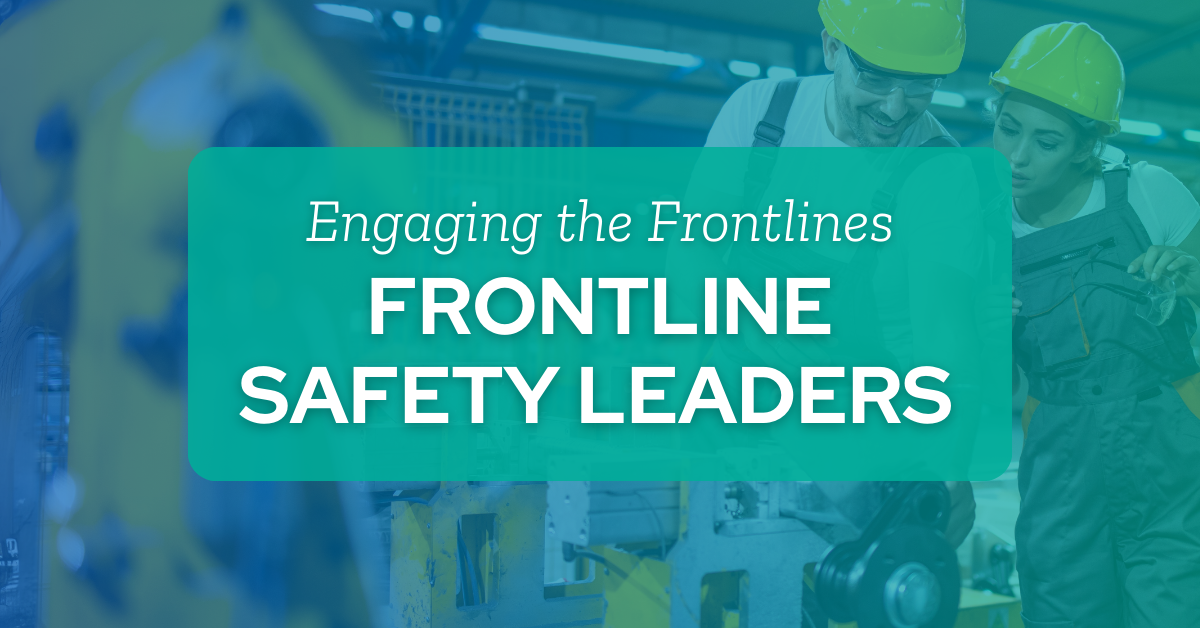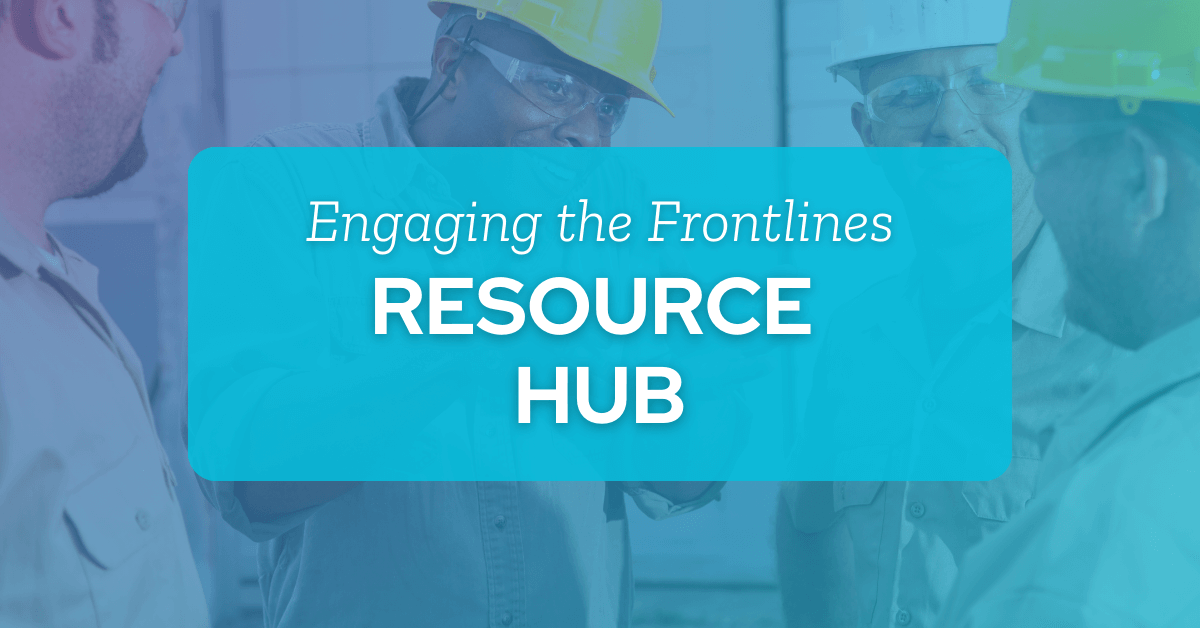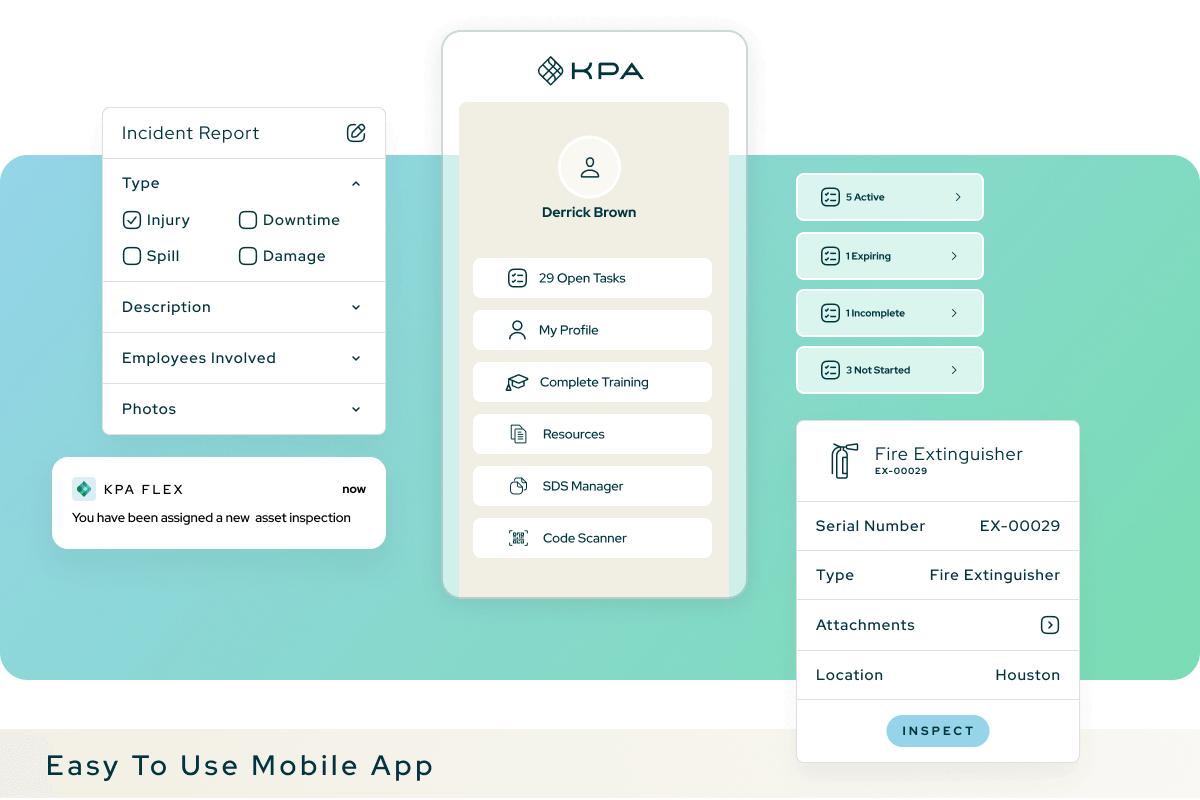Safety shouldn’t be hard. Yet many organizations struggle to move beyond basic compliance to create a true culture of safety engagement. The key? Empowering frontline workers to take ownership of workplace safety.
This was a vibrant topic of conversation among the safety professionals in our KPA Connect customer community, where industry leaders share their real-world successes and lessons learned.

The Difference Between Compliance and Empowerment
Compliance means following rules and regulations. Empowerment means giving workers the tools, authority, and confidence to actively participate in safety initiatives. While compliance creates a baseline for safety, empowerment builds a sustainable safety culture where everyone feels responsible for maintaining a safe workplace.
KPA customer Sean Jones, Safety Manager at Hayes Company, shares,
“When I first started with my company, there was a lack of ownership and accountability. The culture wasn’t the best. A lot of the employees simply didn’t care. So I decided to first get to know each of them individually, then learn and understand their jobs. I rarely mentioned anything about Safety. For me, it was about building the culture and relationship with the employees.” The result? “I saw a significant decline in incidents.”
Key Elements of Worker Empowerment
Creating a culture of empowerment requires several essential components working together. Here’s how successful organizations build engagement through key program elements:
KPA customer Judy DeForeest, EHS & Quality Coordinator at LDX Solutions, explains,
“Leading by example, coaching, and rewarding them is key. Just because it has always been done that way doesn’t make it the safest. Persistence is key.”
A KPA customer and EHS Specialist at a foam manufacturing company shares,
“We implemented safety committees in 2024. Several of these committees used 5S principles to address their housekeeping and efficiency issues. Employee work stations were cleaned up, exit routes and emergency equipment were cleared, wastes were disposed of, and forklifts were given designated travel routes.” Their advice? “Share the ‘wins’ and best practices across departments and facilities. No need to reinvent the wheel.”
KPA Customer Timothy Shaw, Information Success Coordinator at McCumber Well Service, explains:
“One thing that has helped our safety program was adding our Good Catch program to our Employee Portal app. This makes it more convenient to submit Good Catches and makes those reports more public as they are now something every employee can view. The more you can publicly acknowledge and celebrate people doing good things, the better off everyone will be. Reward the right behaviors, and they will increase.”

Discover actionable strategies to build a stronger safety culture with our comprehensive Engaging the Frontlines Resource Hub. Whether you’re looking to improve communication, increase participation, or leverage technology, you’ll find practical guidance backed by over 30 years of EHS expertise.
Tools for Empowerment
Technology plays a crucial role in modern safety programs by making it easier than ever to put safety tools directly in workers’ hands.
KPA customer Chris Gafford, EHS Manager at Ring Energy, shares,
“Honestly, KPA has been a game changer. Employees are able to do incident reports, inspections, observations, etc. in the field now. They have really bought in.”
Creating Opportunities for Worker Input
Successful safety programs provide multiple channels for workers to contribute their knowledge and experience.
D’Angelo Marshall, HSE Manager at Vanalt Electrical Construction, explains,
“The trust from management to re-invent the wheel and try out new things, also getting input from all aspects of the company” led to “more ownership and less pushback.”
KPA customer David Finley, HSE Director at Dolese Bros., advises,
“Don’t try and make too many top down decisions if you want to see real change and buy-in from the organization.”
Measuring Success
To ensure your empowerment initiatives are effective, track these key metrics:
- Participation rates in safety programs
- Number of safety suggestions submitted
- Percentage of suggestions implemented
- Safety observation frequency
- Near-miss reporting rates
- Employee satisfaction scores
- Incident rates and severity
KPA customer and Sustainability Supervisor encourages,
“Keep moving forward even when you feel you’re not making a big impact. Sustainable change comes slow and steady so be persistent and consistent with your message.”
How KPA Helps Enable Frontline Engagement
KPA’s comprehensive EHS software platform puts safety directly into workers’ hands through:
- Mobile-first design for easy field access
- Real-time notification systems
- Two-way communication tools
- Robust reporting capabilities
- Training and documentation resources
The platform is built for flexibility, recognizing that every organization’s safety needs are unique. With KPA, you can:
- Configure forms and processes to match your workflows
- Enable offline functionality for remote work
- Track participation and engagement metrics
- Manage training and certifications
- Document observations and incidents
- Generate insights from safety data

By combining intuitive software with expert consulting services, KPA helps organizations build sustainable safety cultures where frontline workers are truly empowered to participate in and take ownership of workplace safety.
Remember, moving beyond compliance to true engagement takes time and commitment.
But with the right tools and approach, you can create a safety culture where every worker feels empowered to contribute to workplace safety.
As Bill Woods, KPA customer and Director of Safety at American Welding & Gas advises:
“Don’t expect immediate results. Change can be difficult. Document and celebrate the wins to show the positive impacts.”
Related Content
Explore more comprehensive articles, specialized guides, and insightful interviews selected, offering fresh insights, data-driven analysis, and expert perspectives.

